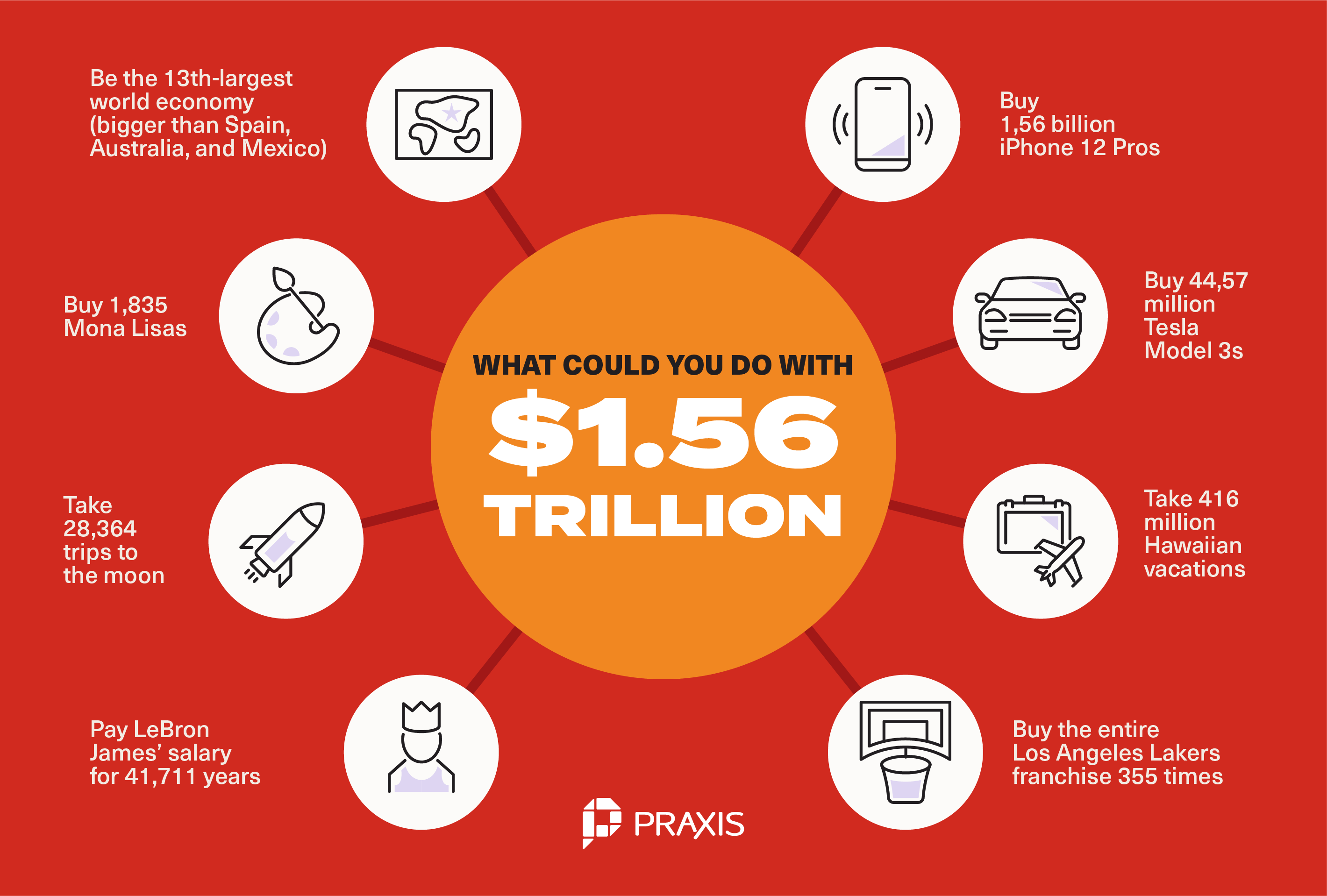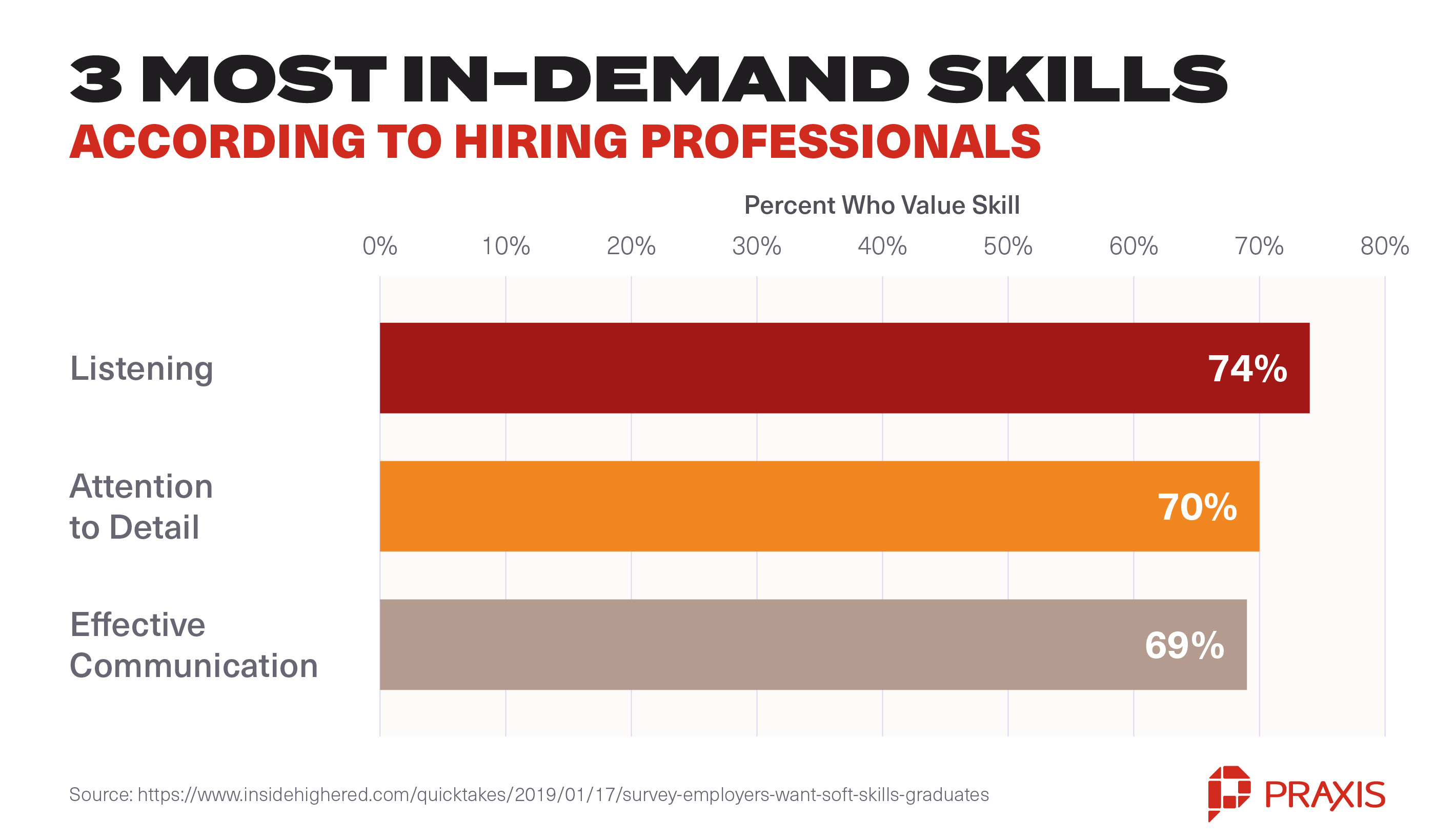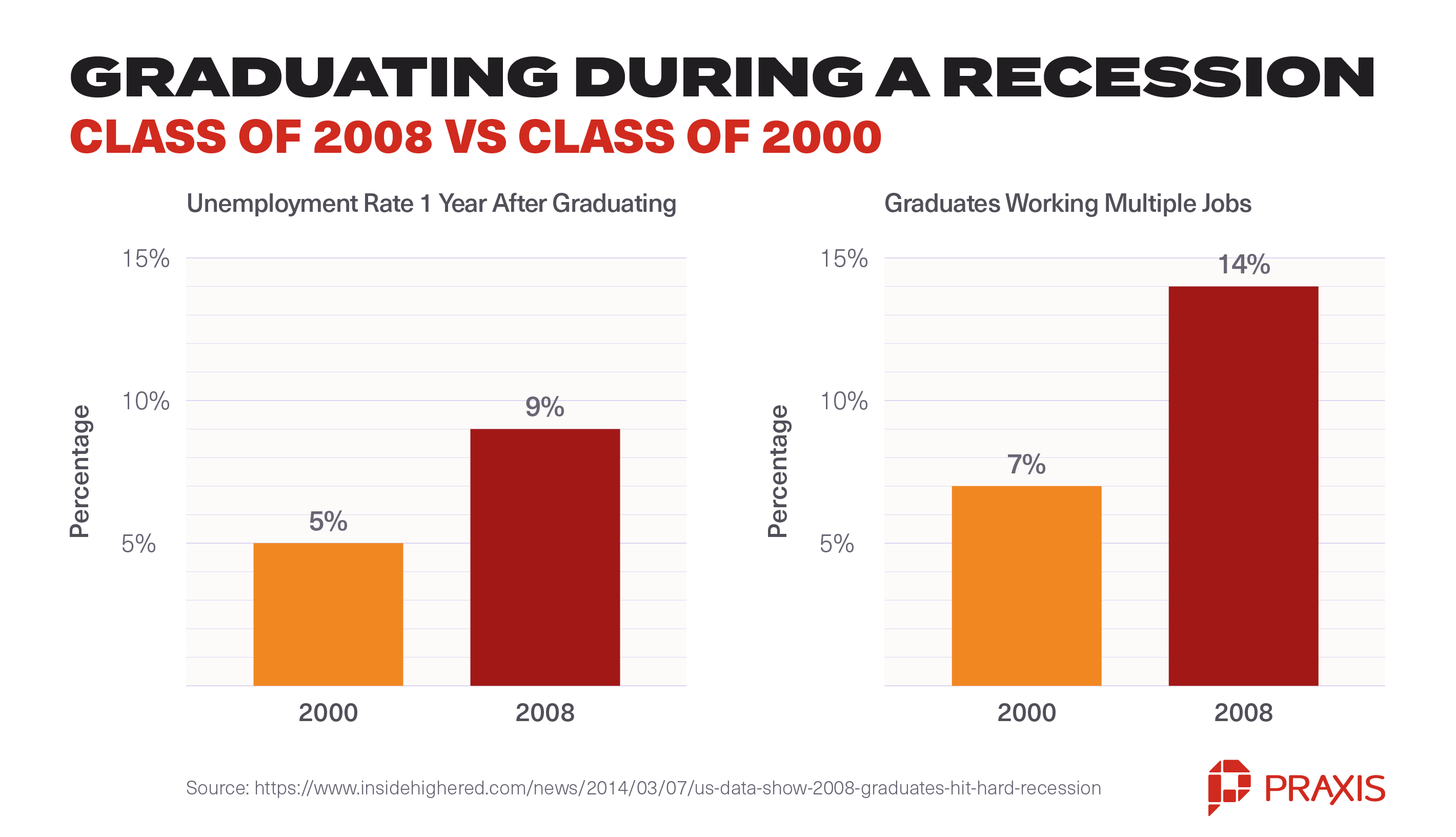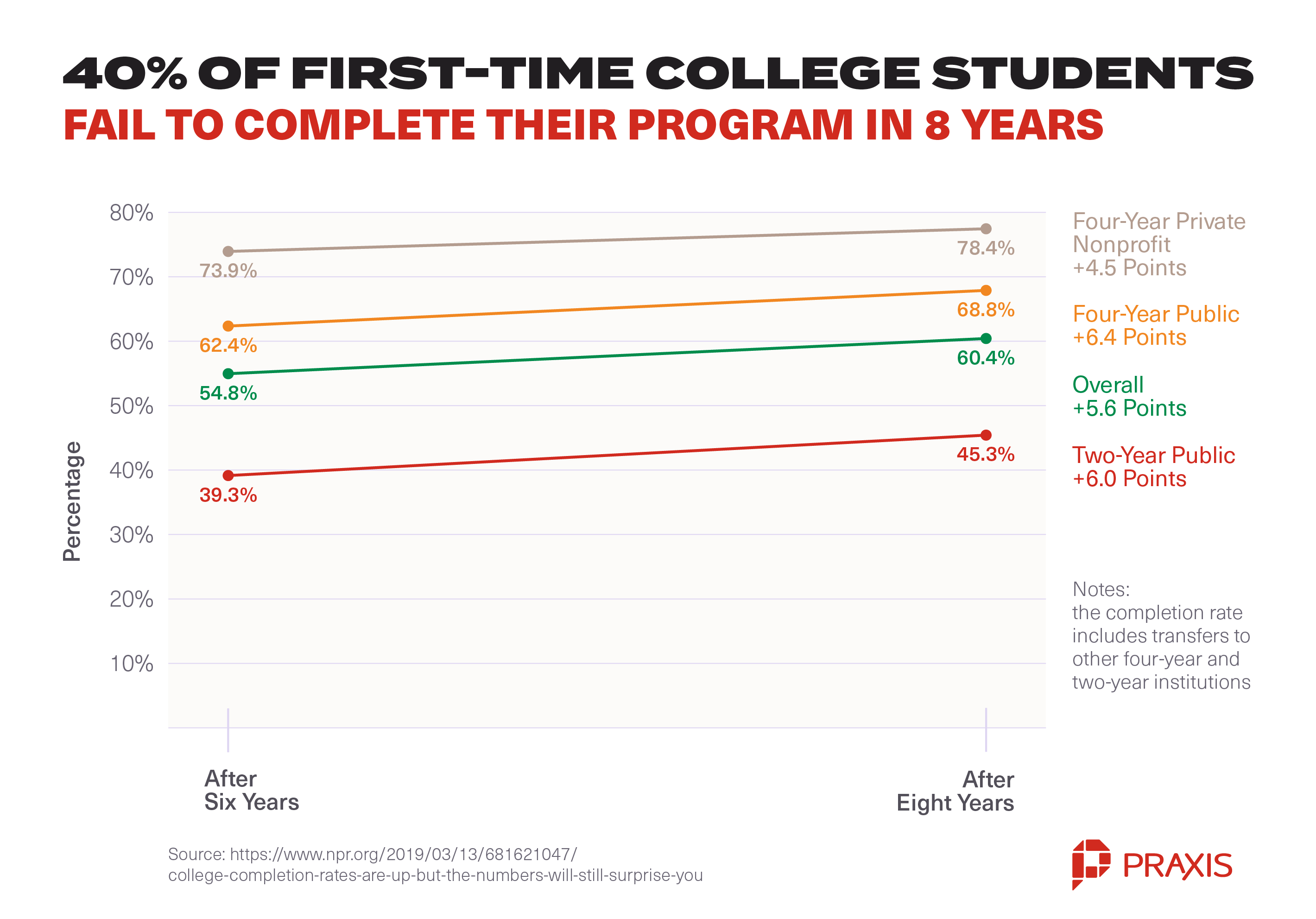“Just take out some loans.”
That’s the sage advice my friend’s mom gave him back in 2005 when he’d been accepted to his top choice college. And that’s exactly what he did. My friend took out $130,000 in student loans, mostly from private lenders like Sallie Mae, to pursue a Bachelor’s degree in Psychology.
Today, with his degree in hand and a decent job in his field, my friend also has something else: a $1,000 payment every month to keep Sallie Mae at bay. He’ll be paying his student loans off until he’s 48 years old, and by the time he’s done, he’ll have paid $138,000 in interest, meaning his degree will have cost him over a quarter of a million dollars.
Fifteen years ago, “Just take out some loans” was the well-meaning parental equivalent of “C’mon everybody’s doing it.”
Unfortunately, everybody was doing it.
While my friend’s situation may be extreme, it isn’t uncommon. In fact, he could actually be considered one of the lucky ones.
Over the last decade, America has slowly been waking up to the enormity of the current crisis like a student repeatedly hitting snooze to put off facing the reality of an exam we’re woefully unprepared for. Then COVID-19 burst through the door, shook us awake, threw the exam down on our bed, and shouted, “Begin!”
Because of the current pandemic, almost every college student is enrolled in some form of online classes, which has forced us to question what students really are paying for. We’ll pay $300 for an immersive Beyoncé or Justin Timberlake live performance, but how much will we pay to watch a simulcast at home on our tiny laptop monitor?
Is $36,000 per year worth it for Zoom University? And if not, was it worth that much before?
While it may feel like the COVID-19 pandemic was the proverbial straw that broke the camel’s back, the truth is the camel’s back has been broken for decades.
If you’re uncertain about signing up for the traditional college experience amid the current pandemic, good. You should be.
Today, there are more alternative paths for high school graduates to take than ever, many of which lead to the same – or greater – success with far less risk.
But to start, let’s look at 10 reasons college was already broken.
10 Unavoidable Signs College Was Already Broken
These 10 stats, which are equal parts stunning and saddening, show how broken America’s college system really is.
1. Americans Have $1.56 Trillion in Student Loan Debt
The human brain has a hard time comprehending numbers that large, so let’s think about the magnitude of our country’s collective debt in other terms.
What could you do with $1.56 trillion?
- Take 416 million Hawaiian vacations.
- Take 28,364 trips to the moon.
- Buy 1,835 Mona Lisas.
- Pay LeBron James’s annual salaryfor 41,711 years.
- Buy the entire Los Angeles Lakers franchise355 times.
- Be richer than 8 Jeff Bezos.
- Buy 1,56 billion iPhone 12 Pros.
- Buy 44,57 million Tesla Model 3s.
- Give 108 million Americans a $1,200 stimulus check every month for an entire year.
Ready for the craziest one?
If America’s student loan debt were a country, it would be the 13th-largest economy in the world.

2. 40% of Students May Default on Their Loans by 2023
As of 2019, an estimated 22% of all Americans with federal student loan debt are in default on their loans, and some think the total number of borrowers in default will rise to 40% by 2023.
Defaulting is a huge deal because of its compounding effects. It kills your credit score, and that means higher interest rates and monthly payments for everything else in life: car payments, mortgages, credit cards, you name it.
Is the burden of all these monthly payments catching up to you? You may also have your wages garnished, making it even harder to make ends meet. Even filing for bankruptcy, the usual last-ditch solution, won’t fix the problem as most student loan debt can’t be discharged.
3. 34% of Employers Say College Hasn’t Prepared Students For Jobs
Increasingly, employers are shifting how they evaluate job applicants. It’s becoming less about what you know and more about how you think.
A 2019 survey by Cengage, an educational technology company, asked 650 hiring professionals what a hirable job applicant looks like. The survey found “soft skills” like listening, attention to detail, and effective communication are today’s most in-demand talents.

Nearly 73% of employers said that finding qualified candidates was somewhat or very difficult and 34% said that college hasn’t prepared students for jobs.
Colleges simply aren’t teaching students these skills.
4. More Than 33% of College Seniors Can’t “Make a Cohesive Argument”
Each year, freshmen and seniors at 200 US colleges take the Collegiate Learning Assessment Plus exam (CLA+ for short), which measures how students’ critical thinking has improved over their four-plus years at college. The results are alarming.
At over half of those 200 US colleges, more than one-third of seniors “were unable to make a cohesive argument, assess the quality of evidence in a document, or interpret data in a table.”
We’re paying how much money to learn what exactly?
5. 90% of Employers Are Open to Hiring a Candidate Without a Four-Year Degree
With colleges unable to meet employers’ needs, those employers are looking elsewhere for candidates.
A 2018 survey by Learning House asked 600 human resource leaders about the challenges of hiring new employees and an incredible 90% said they’re open to hiring candidates without traditional four-year college degrees. That includes 66% who would hire someone with a recognized industry certification in place of a college degree, 47% who would hire someone with a MOOC-degree, and 24% who would hire someone with a digital badge.
6. 54% of Employers Provide Additional Training to Develop Talent
Because colleges aren’t teaching the skills companies are looking for, it’s up to employers to do it. Manpower Group’s 2018 Talent Shortage Survey found that 54% of employers provide additional training to new hires to make up for the lack of qualified candidates.
Here are three other strategies employers are using to overcome talent shortages:
- 36% are adjusting education or experience requirements
- 33% are recruiting from outside the traditional talent pool
- 30% are offering alternative work models (e.g. freelance or contract work)
Employers are desperate to find qualified candidates and continue to think about applicants in new, modern ways.
7. 50% of Millennials Move Back in with Their Parents After College
The average student with college loan debt owes a whopping $32,731 at 5.8% interest. That means a $360 monthly payment for 10 years with over $43,212 repaid when it’s all said and done.
And that’s almost a best-case scenario. Research shows it takes the average graduate with a Bachelor’s degree 21 years to pay off their loans. That means the actual cost of that $32,731 loan at 5.8% interest is $55,376.
That’s fine. Just get a job, right? After all, that’s why you went to college.
Unfortunately, 53% of college grads are unemployed or working in a field that doesn’t require their degree while making 19% less than they expected, and it took them 3-6 months to find that job.
Oh, and all of this was before the global pandemic. We’re still dealing with the economic fall-out of COVID-19, but we only have to look to the Class of 2008 to see the impact of graduating during a recession.

Extreme debt burdens coupled with lower-than-expected salaries are forcing today’s graduates back home. A survey by TD Ameritrade found that 50% of students currently enrolled or who intend to enroll in college plan to move back home with their parents after graduating, with 24% expecting to stay there until their late 20s or even 30s.
8. 49% of College Educators Say Post-Secondary Education Isn’t Necessary to a Person’s Success In Life
A 2018 Professor Pulse survey asked nearly 2,000 North American post-secondary educators what they thought about the current state of higher education. The results were enlightening:
- 87% believe the cost of tuition is too high
- 74% said they aren’t happy with how the current federal administration could impact the future of higher education
- 49% said post-secondary education isn’t necessary to a person’s success in life
- When asked to rate higher education’s effectiveness at preparing students for their careers, the average response was just a 6.7 out of 10.
9. 40% of Students Who Start College Don’t Graduate
Across all types of colleges and universities, about 40% of students who enroll will fail to complete their degree program within eight years, and few ever come back to finish what they started.
Success rates are higher for four-year private and public schools, but even those schools fail to graduate over a quarter of their students.

For the 40% who dropped out, what are they left with? Usually, some surface-level knowledge and a mountain of debt that leaves them in worse shape than before they started. That said, we firmly believe that dropping out (with a plan) is a better choice than subscribing to the sunk cost fallacy.
10. 85% of 2030’s Jobs Haven’t Been Invented Yet
That statistic comes from a report by the Institute for the Future (IFFT), a nonprofit panel of 20 tech, business, and academic experts who see our world changing at an ever-increasing rate.
Dell Technologies, which published the report, released a statement that will have major implications for the entire higher education system:
“The pace of change will be so rapid that people will learn ‘in the moment’ using new technologies such as augmented reality and virtual reality. The ability to gain new knowledge will be more valuable than the knowledge itself.”
Add that to the list of soft skills employers will start valuing highly.
COVID-19 Didn’t Cause These Problems, but It’s Catalyzing the Rapid Change We Need
The evidence has been mounting for a long time that college has not been making good on the “better life” it’s been selling to students. But the way colleges have responded to the pandemic has made all of this evidence impossible to ignore any longer.
It’s like being on the slow-turning Titanic trying to avoid the iceberg in the distance only to unexpectedly ram into another iceberg.
In a time when traditional college enrollment is in decline, innovative e-learning programs are on the rise, with a forecasted 10.9% annual growth rate through 2025.
Even better, the sudden shift to online classrooms has been challenging at best and ineffective at worst.
Why is that good?
Because necessity is the mother of change.
Companies like Twitter and Square are using the moment to rethink remote work and offer their employees full-time, work-from-home positions. Google and Facebook aren’t far behind. We’ve been moving in this direction for a while, but not at this pace.
The same will happen in higher education. With 77% of students dissatisfied with their remote learning experience, colleges simply weren’t equipped to deal with the sudden move to distance learning
You’re telling me my professor who can’t stop the YouTube autoplayer from playing the next video is going to teach classes online? This should be good.
— Nikki Insana (@NikkiInsana) March 11, 2020
But that dissatisfaction is unlikely to mean a rush back to how things were just a few very long months ago. People are waking up. They’re realizing the traditional college experience isn’t the only path to success.
That’s because, for today’s average student, the college experience involves taking on 20 years of debt to spend four years preparing for an unpredictable job market in which some 85% of future jobs are unknown.
And that’s if you’re one of the 60% who successfully completes their degree program.
Oh, and in the eyes of employers, just 66% of that 60% is actually prepared for their career.
By the way, there’s just a 53% chance you’ll actually work in your field of study.
That’s a huge investment for a lot of uncertainty.
The Most Important Thing for Today’s Student
There’s a “mismatch between the skills that are coming out of colleges and what the skills are that we believe we need in the future.”
That’s straight from the mouth of Apple CEO Tim Cook, who practices what he preaches. Only half of the tech giant’s US-based employees have a traditional four-year college degree.
To put it bluntly, employers don’t care whether you went to college. What they do care about is whether you can help their company grow and thrive.
Before the internet gave employers the ability to instantly gain insight into prospective employees’ skills, work ethic, values, and ideas, having a college degree was the best barometer for measuring potential.
However, the rise of self-directed learning has taken the power of knowledge away from stodgy institutions and put it in your hands. You don’t need to bend to the will of almighty Higher Education to learn valuable skills and prove your worth. You can leverage the power of the Internet in ways previous generations never could:
- Take classes and tutorials to become an expert on virtually anything
- Earn certifications to prove your expertise
- Showcase your skills in an online portfolio
- Share your knowledge and passion with a podcast or blog
- Build a social media following to promote yourself or gain notoriety
- Find paying work as part of the growing gig economy
Today, you can own your path and create your own success like never before.
November 11, 2020
